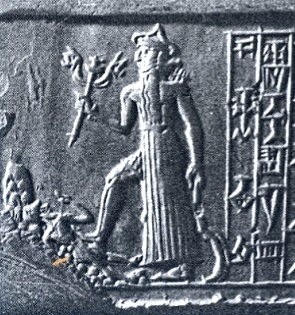Humans love anthropomorphisms! It makes it easy for us to think about concepts if we dress them up as humans. Death is no exception. Western culture has the grim reaper with his long black robe, scythe and his pale horse. But where did this Death come from and what came before him?
What is possibly the earliest known representation of Death, found at the Neolithic settlement at Catal Huyuk in Anatolia, shows Death as gigantic black birds, of vulture like appearance, who menace headless human corpses1. But this culture is mostly unknown to us so an understanding of this representation is beyond us at present. But they are black, which is the first attribute of our Death.
In Mesopotamian times the personification of Death was Nergal. In early lore he was handed charge of the underworld by his parents Enlil and Ninlil2, but it later times he was said to have obtained his dominion by marring Ereshkigal, Queen of the Great Below3. He is the first known representation of Death wearing a black robe, and he is armed with a scimitar and a staff4. Nergal is not a punishing Death but he is an inflicted death, which is reflected in his also being the god of war and pestilence. He is the essence of destruction, but there is no intent, no sense of death as a moral consequence, though deaths are sometimes brought about by him by means of daemons.
Alike to our Death, the winged motif is seen in the Roman personification of death, Mors, who is black winged. Mors is pale and emaciated in the extreme, and hovers over souls waiting for the moment of death. While it is possible that the Grim Reaper’s robe metamorphosized from these representations of wings I think it more likely that the robe derives from the medieval European practise of depicting the dead as skeletons, or bodies, wrapped in their shrouds (see below Norfolk 14995).
Continue reading